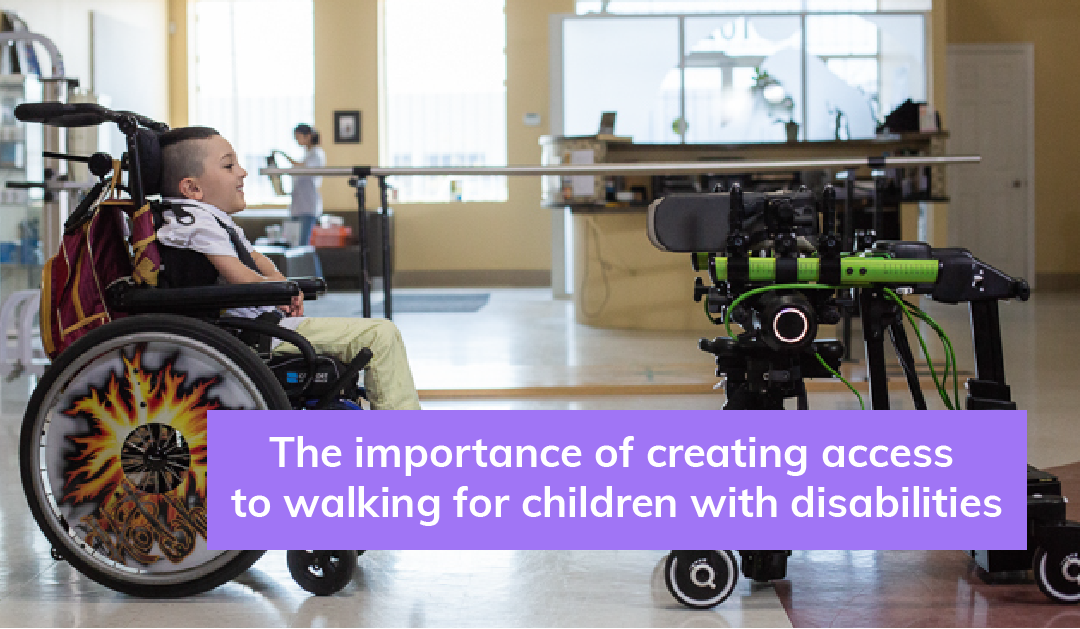We started working on building an assistive device for children with disabilities because Manmeet (CEO of Trexo Robotics) learned that his nephew was diagnosed with cerebral palsy and would not be able to walk (see Trexo Robotics’ story). We later learned that walking is not just a mode of mobility that many people use daily, it is also a gateway to maintaining one’s health.
Why is walking important?
The Mayo Clinic writes that walking is a form of physical activity that can help you prevent various conditions. It can strengthen your bones and muscles, as well as improve your coordination and your mood. We know that physical activity in general is also associated with higher confidence and improved mental health.
Many people say that walking is the easiest form of exercise that anyone can do. All you need is a pair of shoes! And yet, that is not entirely true for everyone. Thousands of children are diagnosed annually with conditions that prevent them from walking. Think about the millions of steps we accumulate over our lifetimes. Many children never get the opportunity to build up their walking capability in a sustainable way. How unfair is that?!
Our friend Iris has been using the Trexo Home for 5 months now and let’s just say a lot has happened. Check out the improvements Iris has made with the Trexo (hint: it includes walking!).
We’re all sitting too much!
When you can’t walk, you spend a lot of time sitting. Sitting has been shown to increase the risk of obesity and metabolic syndrome. In fact, research has shown that the negative effects of sitting can be seen even in children. This puts them at higher risk of serious conditions later in life. This isn’t just an issue for children who cannot walk, the consequences of sitting are a danger to all children who are now reportedly sitting more on average than their parents.
Don’t put off good habits, start by slowly cutting the amount of time you sit today!
Limitations in resources to get children with disabilities walking
It can be hard for children with mobility impairments to get physically active. Without ever building up the necessary bone density and muscles through crawling and walking as a toddler, they might not ever get strong enough to stand independently and take steps. Physical therapy has been a wonderful resource to help many children, yet therapy can be difficult to access and requires a lot of time. And while orthotics and assistive equipment has been getting better, there is still a lot to be done. It is clearly a very consuming and creative endeavor for parents of children with disabilities to get them physically active!
Trexo Robotics’ approach to assisting children in walking
When we considered this challenge, we considered many technologies that have been in development for adults. Exoskeletons, for example, can help adults do a wide range of tasks, including walking even if you have lower body paralysis.
Our approach was to design a piece of equipment that helps children walk independently so that they could explore their environment and get some exercise. We also knew that we want to make this technology available for home use to help make everyone’s day easier. We decided to build on existing walkers and gait-trainers to the delight of many of our clinical partners and parents.
In essence, the Trexo systems are our attempt at helping make walking more accessible to children. We want to reduce the barriers of walking by making technologies more accessible. Really at the core of our company, we’re driven by the belief that everyone should be given the opportunity to explore what they’re physically capable of, be it through walking or other forms of exercise or activity. Amazing things can happen when we overcome challenges!
We look forward to continuing to work with families and making Trexo accessible. In the meantime, here are some activities that children can try to get more active.
Ready to explore the Trexo Home for your child? Fill out the form below and we will get in touch!


Recent Comments